Fabric Focus: Dive Into Graphic, Soft Damask
http://decor-ideas.org 08/01/2015 00:13 Decor Ideas
You might know damask as a large-scale pattern of swirling, scrolling leafy foliage. But you might be surprised to learn that true damask isn’t a pattern, but rather a type of fabric. Damask might seem heavy on the history side, but it’s not just for traditional spaces. Here are some things to consider when using it in your home.
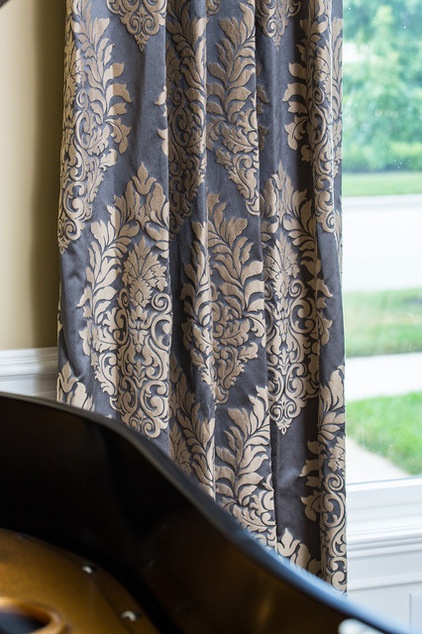
What is Damask?
Damask gets its name from the Syrian city of Damascus, an advanced weaving center during the early Middle Ages. Damask isn’t a design but rather a fabric made through a particular weaving process. The organic designs created by the process have since become referred to as damask. Today we see damask patterns printed on fabric, and the term is often used interchangeably to mean the type of woven fabric and the pattern itself.
Authentic damask fabric uses different weaves, like satin, sateen and twill, to create patterning with different textures and levels of sheen. The rich design is distinguishable in the way light plays off its vertical warp and horizontal weft threads.
Damasks were traditionally made of pure silk in a monochromatic color, but the process has expanded to include fabrics made with two or more colors, as well as blends of fibers.
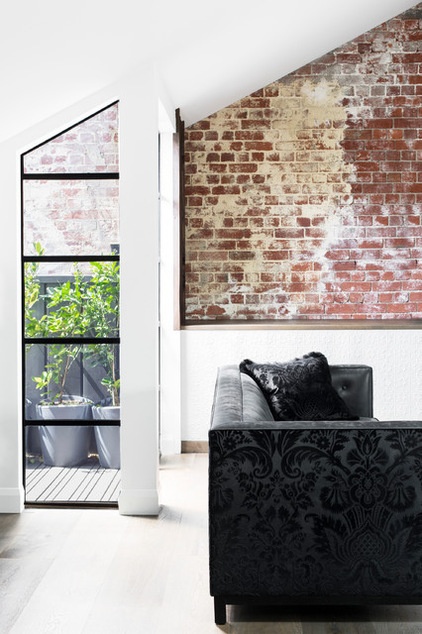
Pros of Damask
Timeless and timely. “How damask has lasted through the ages, there cannot be a more timeless pattern,” says Caryn O’Sullivan of Drapery Street. While many damasks are traditional, some have a contemporary aesthetic, like the example shown here.
O’Sullivan says damasks that have larger-scale patterns, prominent texture or a renewed color palette tend to feel more updated than their more formal cousins.
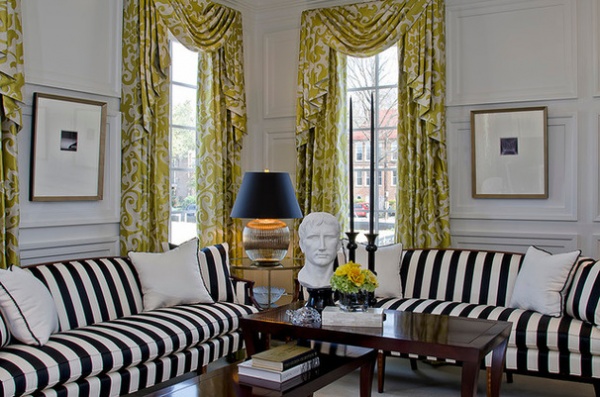
Graphic yet soft. Damask’s main allure is its eye-catching patterning. Whether tone-on-tone or multicolored, its graphic boldness can become the focal point of a room. Yet damask’s fluid, organic patterns also soften hard lines, as these stately window treatments do amid the striped sofas and linearity of the architectural moulding.
Reversible. Authentic damask is unusual in that it’s reversible. Because the pattern is woven into the fabric instead of printed, the pattern on the back side is the inverse of the front. You might even find you like the reverse side better. Damask offers an opportunity for adding variety without buying more fabric.
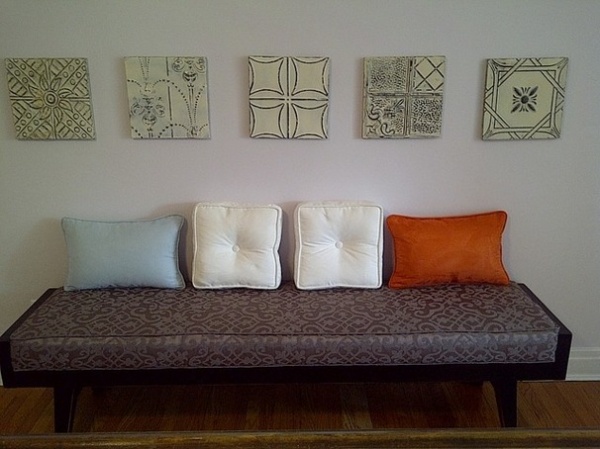
A savvy mixer. Despite damask’s formal roots, it mixes quite well with pieces and fabrics of other genres. The smaller-scale gray damask shown here looks terrific on the modern bench.
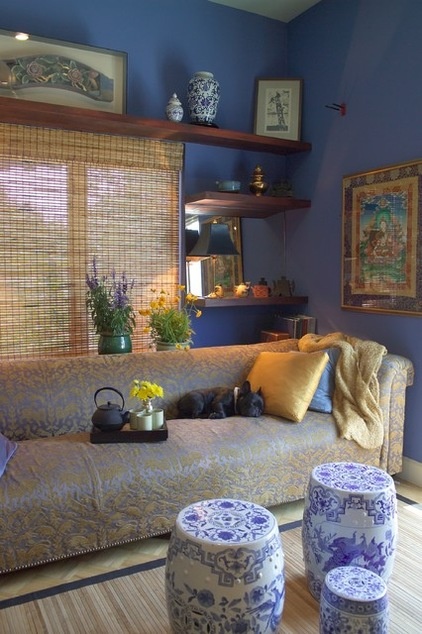
Playful with light. Damasks that have lustrous fibers can add a level of luminosity to the surrounding space.
The damask on this sofa is made of a silk-linen blend featuring exotic animals. “The light plays beautifully off the silk and linen damask, greatly changing from bright and cheerful during the day to moody and sophisticated at night,” says designer Jane Ellison.
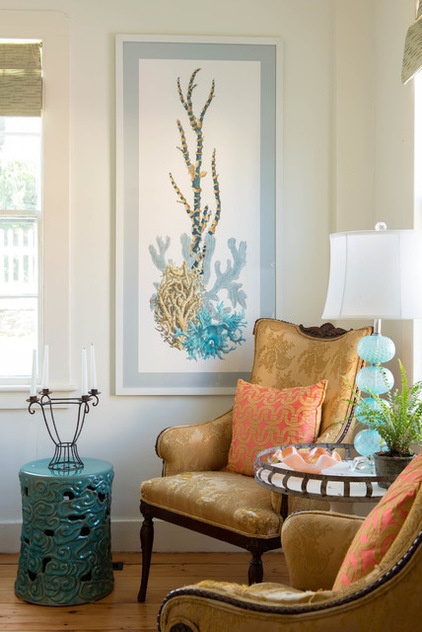
Cons of Damask
Susceptible to abrasion. Though damasks tend to be relatively thick, the long yarns on the surface of it are subject to abrasion more than a fabric with a balanced weave, in which all the yarns are the same size and strength.
Check the fabric’s label for results from either the Wyzenbeek or Martindale abrasion test. These tests measure how quickly a fabric wears. For the Wyzenbeek, a result of 9,000 to 15,000 double rubs is considered medium-use, and 15,000 or more is heavy-duty. The Martindale test is more stringent, with medium-use at 9,000 to 20,000 double rubs and 20,000 or more considered heavy-duty.
Damasks are made from a variety of fibers and fiber blends, including silk, rayon, cotton, polyester and linen. The fabric’s durability also depends on the fiber type. Silk damasks should be kept out of direct sunlight, which will weaken the fiber.
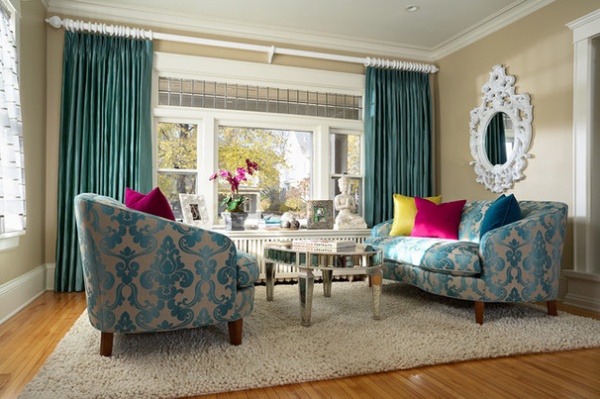
Pricey. Intricately woven fabrics are typically more expensive than plain-woven ones. Ellison says you should expect to pay between $150 and $250 per yard for quality woven damasks. The price varies greatly depending on the fiber used.
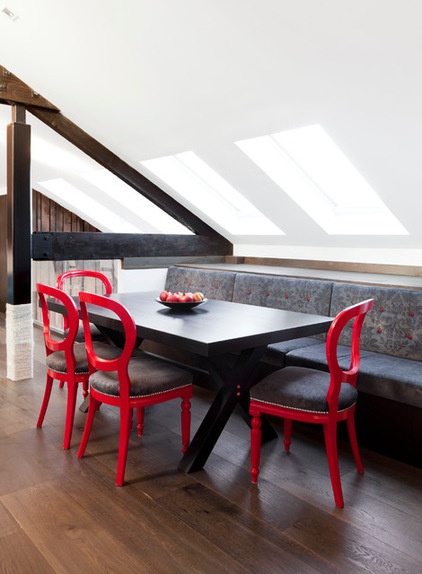
Damask Considerations
Damasks tend to have large pattern repeats and the design motif needs to be chosen carefully for balance.
Pieces that require pattern matching, like the banquette above, will require extra yardage, as much as a full repeat for each adjacent component. This bumps up the cost for larger projects compared with using a solid fabric. However, considering the end result, it’s often worth the extra expense.
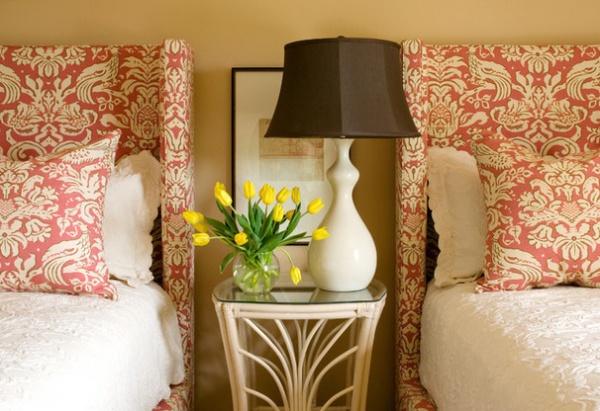
Printed Alternatives
If a woven fabric is too heavy for your needs, there are numerous printed fabrics out there sporting damask-inspired designs, like the one on these headboards and throw pillows. Most printed damasks are made of cotton or linen plain-woven cloth, which is typically less expensive and more casual than intricately woven fabric.
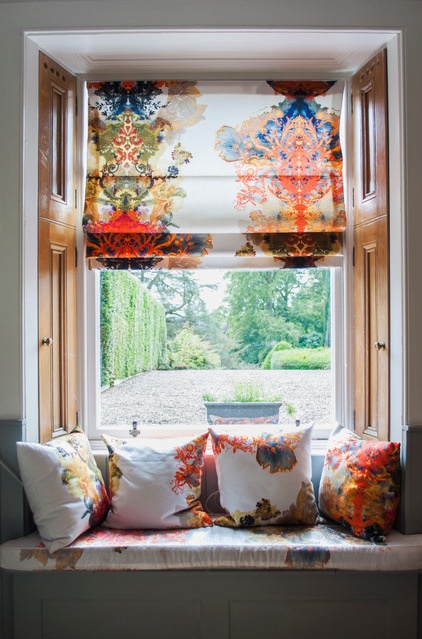
This printed example, a fun, contemporary take on damask made by Timorous Beasties, is called Grand Blotch and resembles a colorful Rorschach test.
See more fabric stories: Chintz | Ticking Stripe | Velvet | Grain Sacks | Crewel | Matelassé | Linen | Silk
Related Articles Recommended












